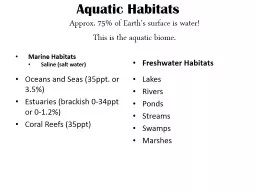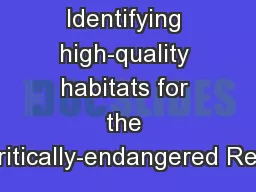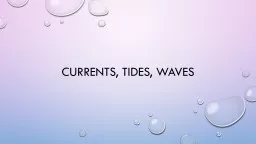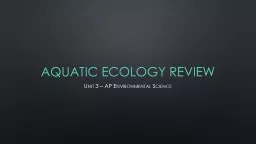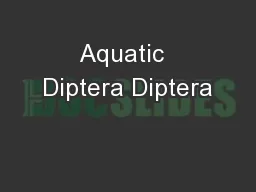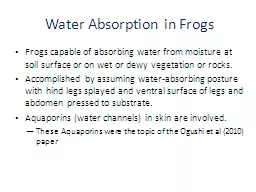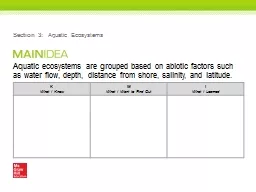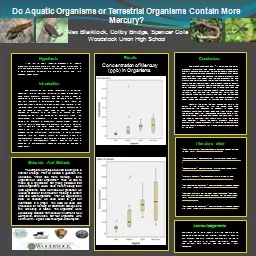PPT-Aquatic Habitats Approx. 75% of Earth’s surface is water!
Author : lindy-dunigan | Published Date : 2019-12-18
Aquatic Habitats Approx 75 of Earths surface is water This is the aquatic biome Marine Habitats Saline salt water Oceans and Seas 35ppt or 35 Estuaries brackish
Presentation Embed Code
Download Presentation
Download Presentation The PPT/PDF document "Aquatic Habitats Approx. 75% of Earth’..." is the property of its rightful owner. Permission is granted to download and print the materials on this website for personal, non-commercial use only, and to display it on your personal computer provided you do not modify the materials and that you retain all copyright notices contained in the materials. By downloading content from our website, you accept the terms of this agreement.
Aquatic Habitats Approx. 75% of Earth’s surface is water!: Transcript
Download Rules Of Document
"Aquatic Habitats Approx. 75% of Earth’s surface is water!"The content belongs to its owner. You may download and print it for personal use, without modification, and keep all copyright notices. By downloading, you agree to these terms.
Related Documents

